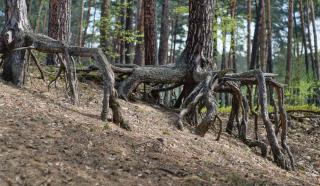

Transplant shock is inevitable when you need to move a plant around. Some plants, though, are more vulnerable than others. Here is a short guide on when to be extra-careful when moving a plant so that it survives.
Read also:
Three main factors determine how much risk is involved when transplanting a favorite tree, shrub or flower:
Some plants are more at risk of transplant shock than others. This is often related to the type and shape of their root system.
Trees that have shallow, far-reaching root systems have a lot of trouble surviving a transplant.
This type of tree is common along bodies of water. Indeed, shallow roots resist root rot better.
Examples of shallow-root trees that are difficult to transplant include katsura and weeping willow.
 Lots of vegetables won’t appreciate transplanting. All those that have long taproots are in this category: carrot, lettuce, radish, endive… You can only transplant these at the very beginning, just after they have sprouted. Otherwise, you’ll have to dig out a very deep clump of soil to make sure you don’t disturb the root.
Lots of vegetables won’t appreciate transplanting. All those that have long taproots are in this category: carrot, lettuce, radish, endive… You can only transplant these at the very beginning, just after they have sprouted. Otherwise, you’ll have to dig out a very deep clump of soil to make sure you don’t disturb the root.
Also, trees and plants that have roots that dig very deep are also harder to transplant. Indeed, you can’t easily dig out a deep cone around the tree root.
Such trees include oak, beech, acacia, and many conifers.
It’s a bit of a conundrum. After all, it’s because a plant is sickly that you might want to transplant it! Plants that need more sun or more shade than they get are weaker to start with. Nonetheless, it must be done.
Ensure you help your plant get stronger before the transplant takes place. To strengthen you plant, shrub or tree, try the following for at least a month before moving it:
As a general rule, the best time to transplant is right after the plant has entered a dormant stage. This usually means fall or early winter, for most plants.
Absolutely avoid transplanting on days when it freezes or when it’s sweltering hot. Your plants will lose any exposed roots within minutes!
I transplanted my 4 grapevines on a hot, dry day… and lost them all! I should have waited for a cloudy day. Now I’ve lost them and it’ll be hard to get a hold of new ones this seasons. Sad to have lost one year!
– Vincent, Nature & Garden reader